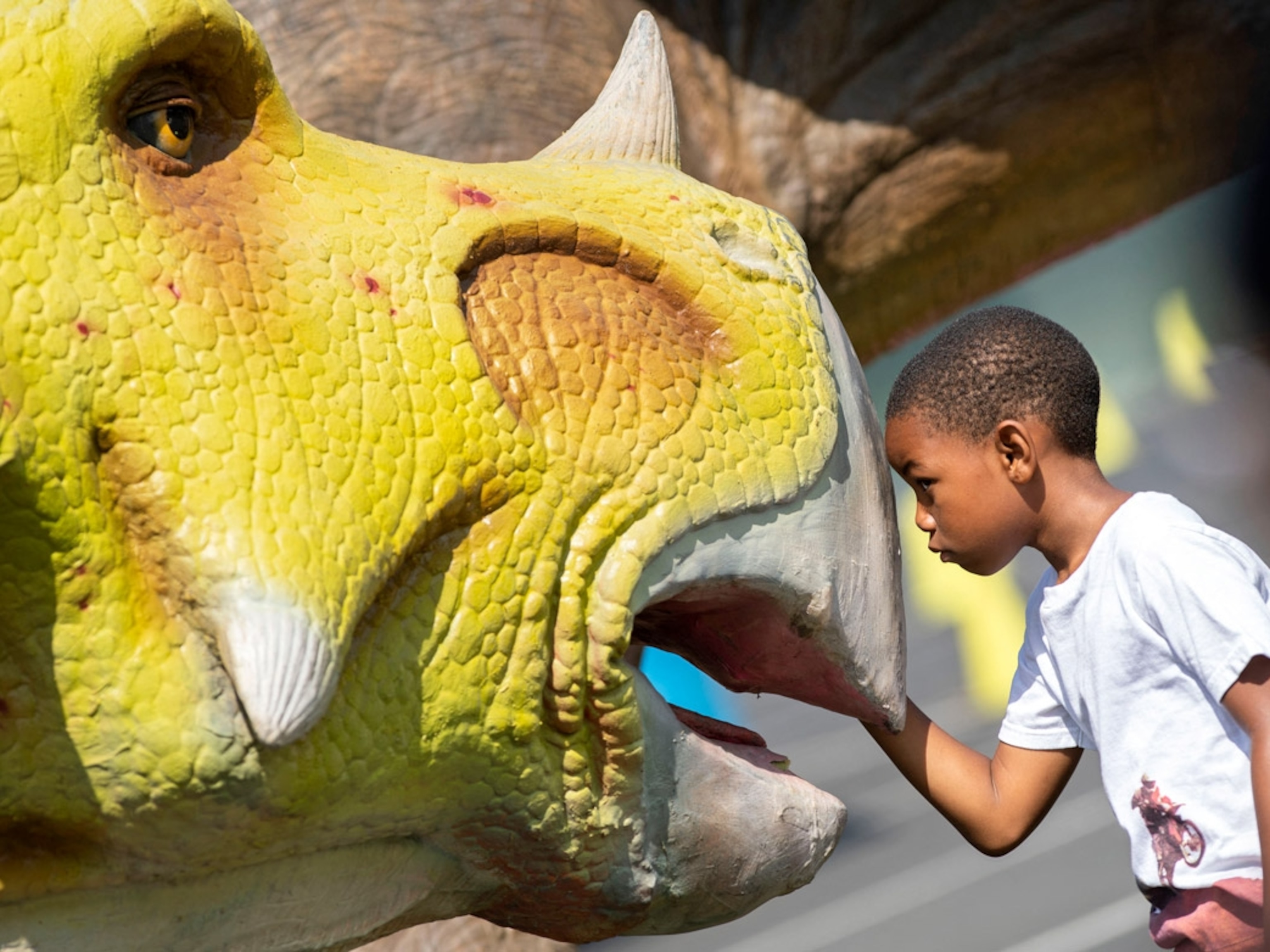Craig Cutler’s passion for dinosaurs roared to life 10 years ago, at a warehouse in New Jersey. Inside, technicians were restoring a Tyrannosaurus rex for a museum exhibit. Cutler, a professional photographer, had been commissioned to document the process—and what he saw transfixed him. Throughout the warehouse, all kinds of ancient, invaluable bones stood frozen mid-assembly like prehistoric actors not quite ready to take the stage. Cutler recalls standing before the disembodied legs of a dinosaur, its fragile bones cradled in a metal rig and affixed with blue tape.



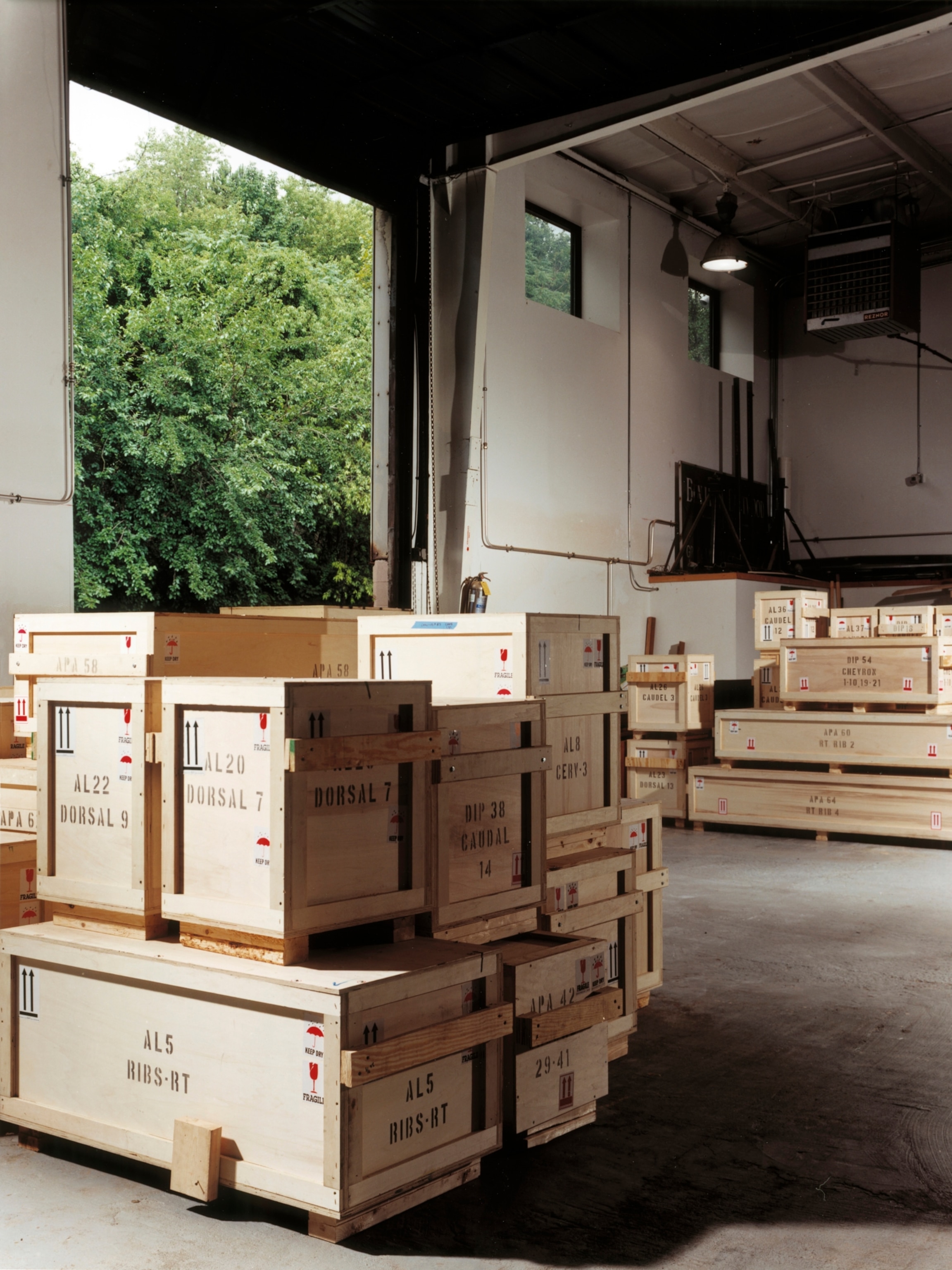



“I thought it was so beautiful,” he says.
Cutler was under the spell of a man named Phil Fraley, a self-described “jack of all trades and master of none” who at the time owned Phil Fraley Productions, an exhibit fabrication company. The firm’s sculptors, jewelers, and other artisans were renowned for their creative and scientifically accurate approach to mounting—and sometimes remounting—fossils. Museums across the U.S. display the company’s work, including the American Museum of Natural History in Los Angeles, where Fraley worked for nine years as a coordinator. (Read about the latest dinosaur fossil discovery here.)


After Cutler’s first trip to the Fraley workshop, he was hooked, visiting the warehouse whenever he had free time to photograph whatever Fraley and his team were working on. “They’d have all these crazy things set up to go to museums,” he says. The dizzying variety of fossils, though, never broke Fraley’s attention to detail. Cutler recalls the time Fraley had completed a whale fossil and shipped it to Los Angeles, only to ask for the fossil back, to bring the mounting up-to-date with new research findings.
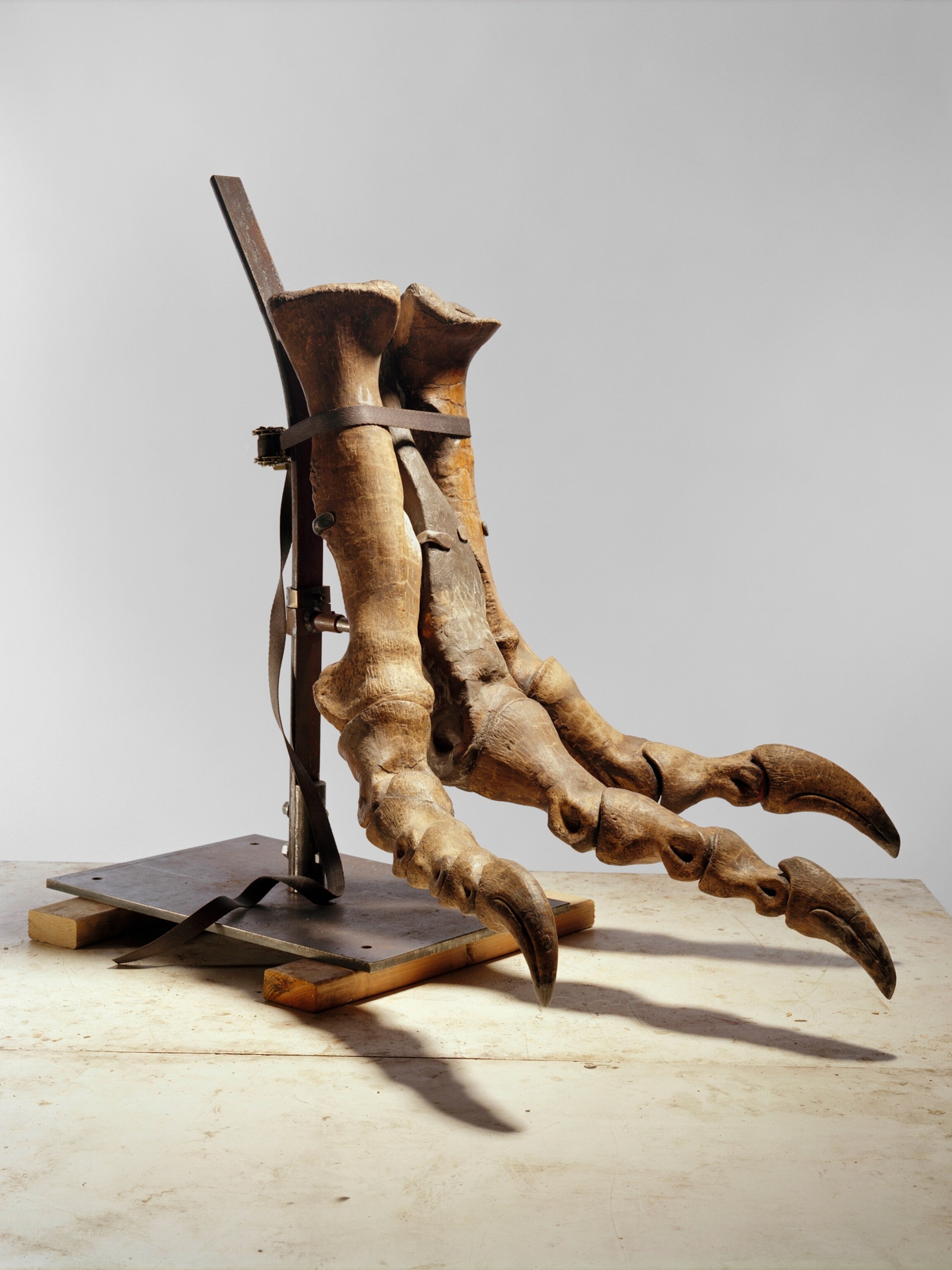
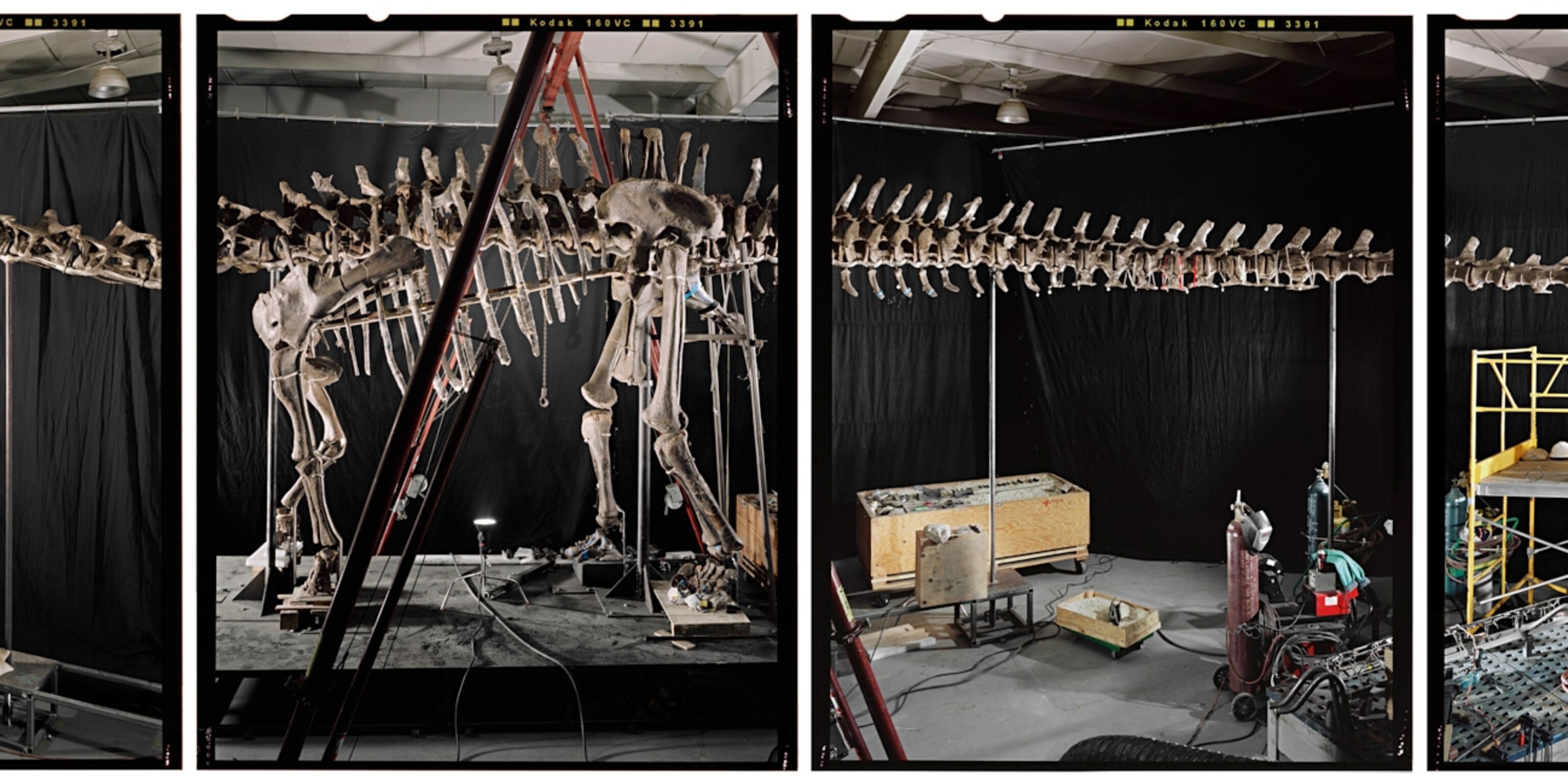

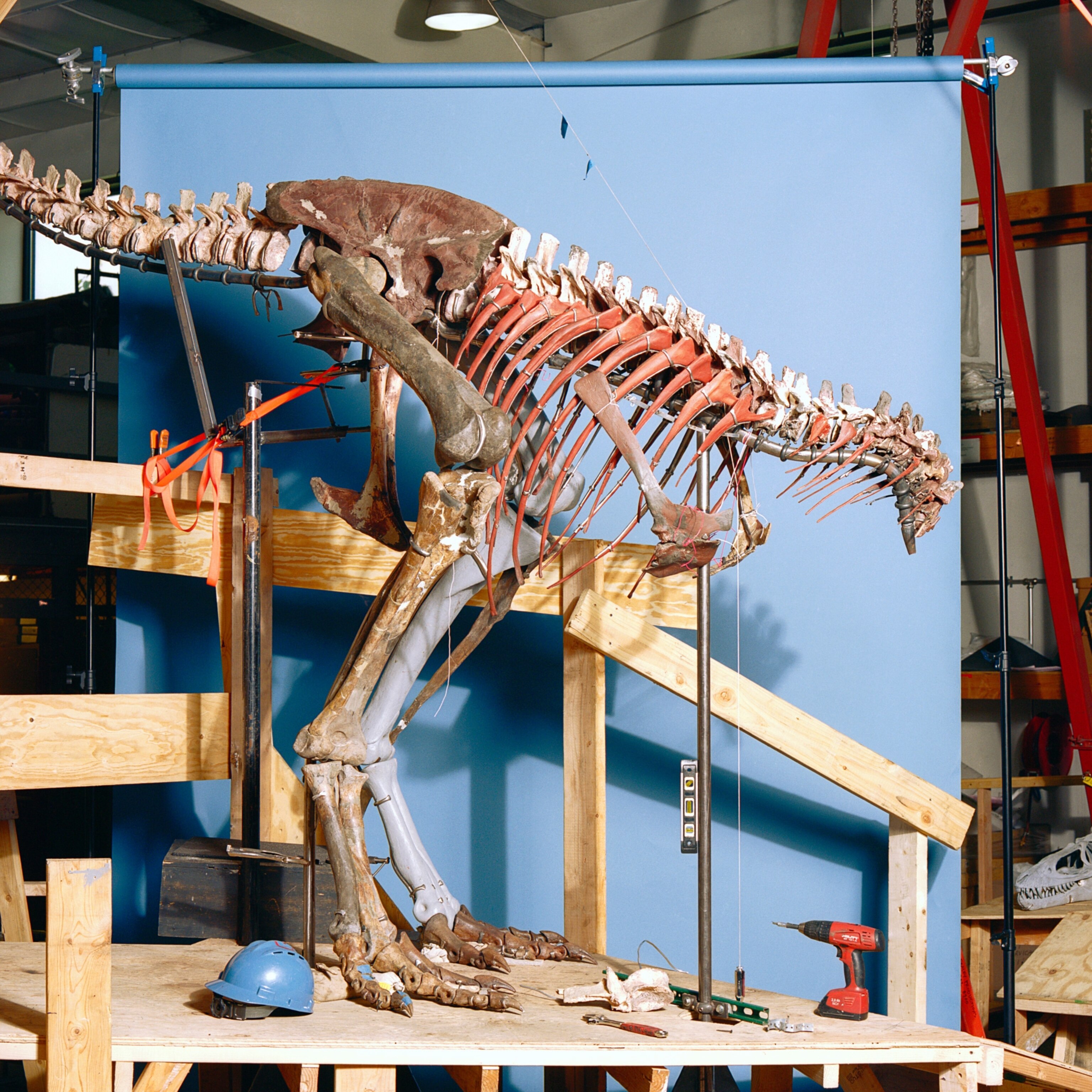
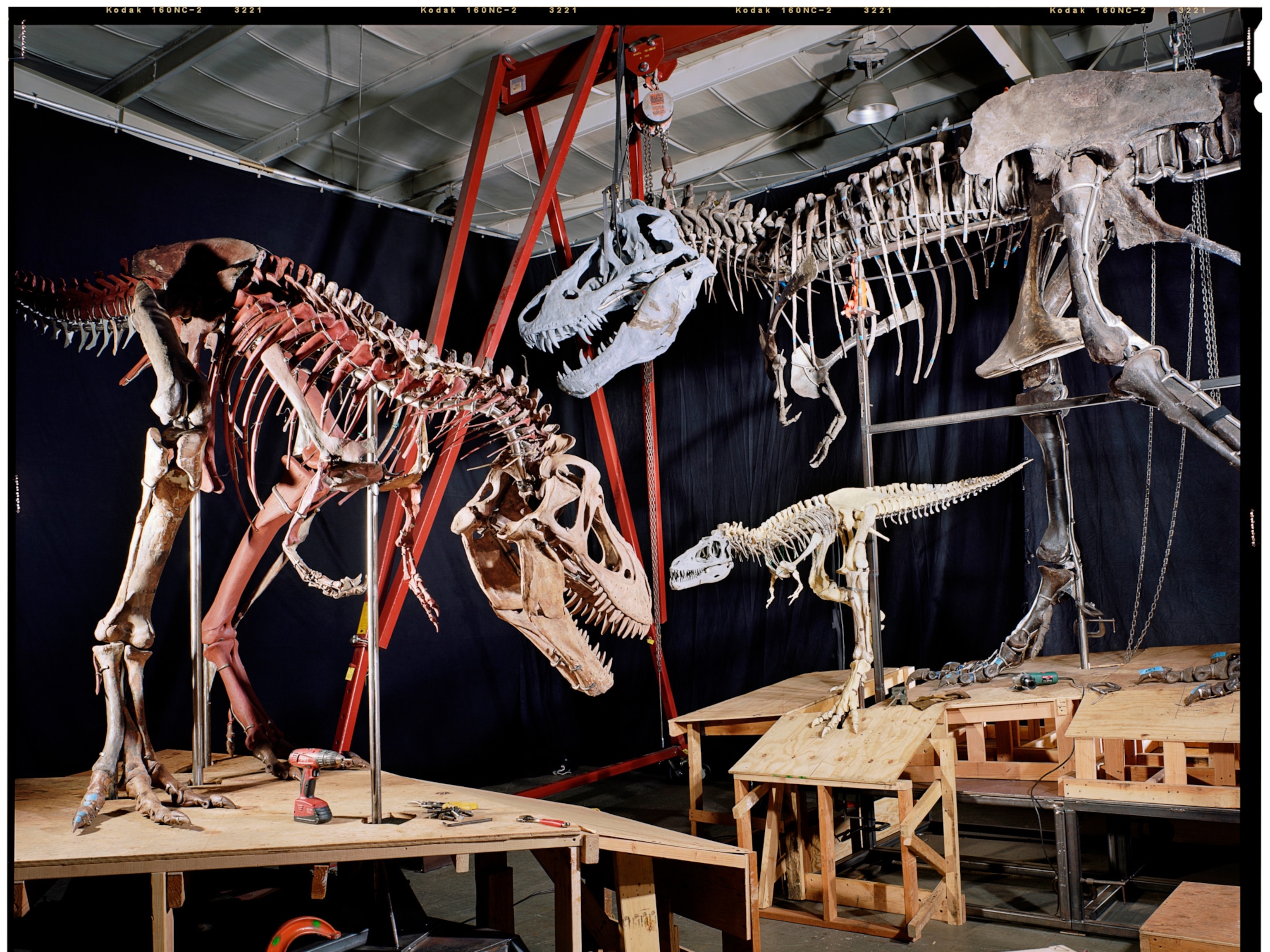


Fraley, who now works as a consultant, says museum visitors who see his dinosaur exhibits are seeing the work of committed artists. On average, Fraley estimates it took him and his team five to six years to complete a project, no matter the cost.


“It was the transference of their energy into putting these specimens back together that brought life to them again,” he says. “These are the building blocks of science—the building blocks of how we as a civilization are moving forward, and to me that’s priceless.” (Meet the Mongolian paleontologist who is repatriating fossils to her home country.)

After years in each other’s company, Cutler continues to visit Fraley and his specimens, in an ongoing photographic project called Bone Tales. And just as he was a decade ago, Cutler remains enchanted with the forms of ancient creatures.
“I love finding art in science,” he says.
Related Topics
You May Also Like
Go Further
Animals
- Octopuses have a lot of secrets. Can you guess 8 of them?
- Animals
- Feature
Octopuses have a lot of secrets. Can you guess 8 of them? - This biologist and her rescue dog help protect bears in the AndesThis biologist and her rescue dog help protect bears in the Andes
- An octopus invited this writer into her tank—and her secret worldAn octopus invited this writer into her tank—and her secret world
- Peace-loving bonobos are more aggressive than we thoughtPeace-loving bonobos are more aggressive than we thought
Environment
- This ancient society tried to stop El Niño—with child sacrificeThis ancient society tried to stop El Niño—with child sacrifice
- U.S. plans to clean its drinking water. What does that mean?U.S. plans to clean its drinking water. What does that mean?
- Food systems: supporting the triangle of food security, Video Story
- Paid Content
Food systems: supporting the triangle of food security - Will we ever solve the mystery of the Mima mounds?Will we ever solve the mystery of the Mima mounds?
- Are synthetic diamonds really better for the planet?Are synthetic diamonds really better for the planet?
- This year's cherry blossom peak bloom was a warning signThis year's cherry blossom peak bloom was a warning sign
History & Culture
- Strange clues in a Maya temple reveal a fiery political dramaStrange clues in a Maya temple reveal a fiery political drama
- How technology is revealing secrets in these ancient scrollsHow technology is revealing secrets in these ancient scrolls
- Pilgrimages aren’t just spiritual anymore. They’re a workout.Pilgrimages aren’t just spiritual anymore. They’re a workout.
- This ancient society tried to stop El Niño—with child sacrificeThis ancient society tried to stop El Niño—with child sacrifice
- This ancient cure was just revived in a lab. Does it work?This ancient cure was just revived in a lab. Does it work?
- See how ancient Indigenous artists left their markSee how ancient Indigenous artists left their mark
Science
- Do you have an inner monologue? Here’s what it reveals about you.Do you have an inner monologue? Here’s what it reveals about you.
- Jupiter’s volcanic moon Io has been erupting for billions of yearsJupiter’s volcanic moon Io has been erupting for billions of years
- This 80-foot-long sea monster was the killer whale of its timeThis 80-foot-long sea monster was the killer whale of its time
- Every 80 years, this star appears in the sky—and it’s almost timeEvery 80 years, this star appears in the sky—and it’s almost time
- How do you create your own ‘Blue Zone’? Here are 6 tipsHow do you create your own ‘Blue Zone’? Here are 6 tips
Travel
- This town is the Alps' first European Capital of CultureThis town is the Alps' first European Capital of Culture
- This royal city lies in the shadow of Kuala LumpurThis royal city lies in the shadow of Kuala Lumpur
- This author tells the story of crypto-trading Mongolian nomadsThis author tells the story of crypto-trading Mongolian nomads
- Slow-roasted meats and fluffy dumplings in the Czech capitalSlow-roasted meats and fluffy dumplings in the Czech capital




